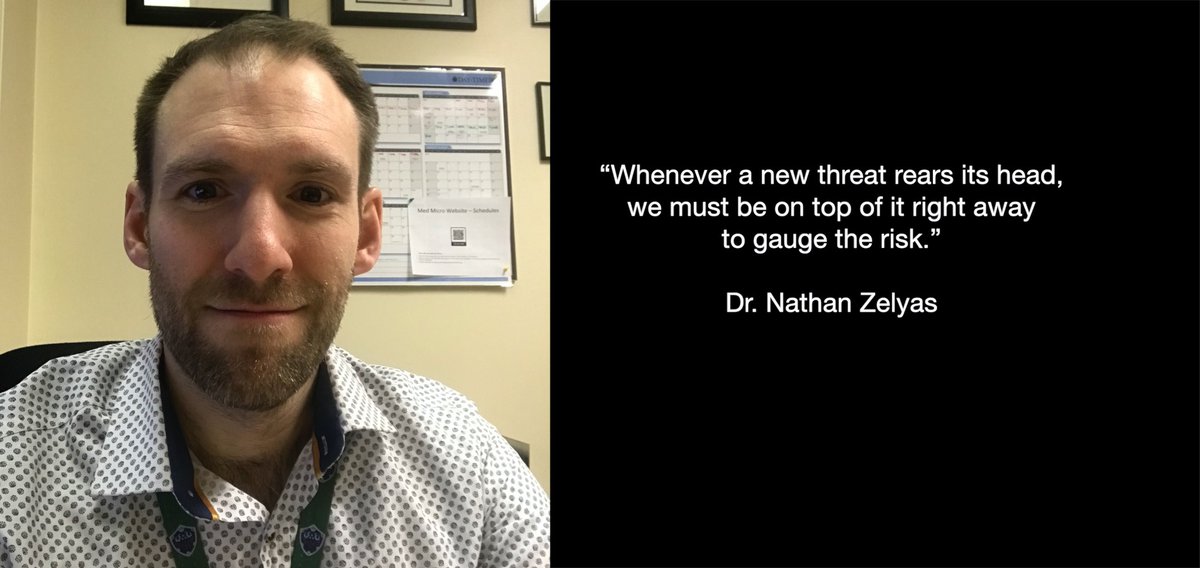Which type of medical practice touches the lives of every single Albertan? You’re probably thinking primary care physicians, and that would be a good guess, but the answer is laboratory medicine. Even Albertans that never see a physician benefit from the work of those practicing lab medicine, because that work focuses on both individual patients and the general public.
Physicians in lab medicine do not typically interact with patients, but their work is critical for physicians in every other discipline, including public health, to provide the best possible care for their patients and Alberta’s population as a whole. Virtually every diagnosis relies on some type of lab medicine.
The role of lab medicine physicians is not always well understood. Many of these physicians focus on the examination of blood, organs, tissues and infectious organisms to identify and diagnose disease and help guide treatment options. Others focus on the prevention, diagnosis and treatment of infectious diseases. These are the physicians identifying cancers from biopsies, ensuring transfusions are safe for patients, and helping to prevent the spread of certain diseases and viruses. They also oversee the work done by other lab staff for routine blood work and tests that help every physician diagnose and treat patients.

“Lab medicine is like a utility, such as water. It’s not something that gets a lot of attention until it’s not there,” says Dr. Brinda Balachandra, President, Alberta Society of Laboratory Physicians and the AMA Section of Laboratory Physicians. “It’s essential infrastructure that needs to be maintained and upgraded to meet the evolving needs of every other practice of medicine.”
Labs provide services to the rest of the health care system, and lab medicine physicians work with technicians and others to help run the tests and manage the system for all patients. Their focus is on ensuring timely lab results get to other physicians so they can diagnose their patients, proceed with surgeries and otherwise save lives.
As with all medical specialties, lab medicine evolves to incorporate new technology, scientific breakthroughs and even identification of new diseases.
Dr. Nathan Zelyas is a medical microbiologist whose job it is to scan for and respond to emerging medical issues. Most of the time this means he oversees the health system’s approach to respiratory viruses, such as influenza, parainfluenza, adenoviruses and regular coronaviruses. This includes developing policies and guidelines for other physicians to use when screening and testing patients. Basically, this means patients are getting the right test at the right time for the right reasons.
Part of his role is to review outbreak and disease reports and other sources of health data for trends and anomalies. He also connects with his colleagues in other parts of the world and participates in national and international groups to share information. In short, he and the roughly 20 other medical microbiologists working in Alberta, are part of an early warning system for viruses.
“Whenever a new threat rears its head, we must be on top of it right away to gauge the risk,” says Dr. Zelyas. “We look at how it spreads, its rate of transmission, and its morbidity and outcomes.”
Dr. Zelyas explains some of the tasks a medical microbiologist might have when facing a new health threat, such as SARS, H1N1 or COVID-19. Once an issue is identified, he would work closely with physicians and stakeholders outside the lab, especially public health. At this point, it becomes a public health matter, but the lab is integral to managing the situation.
Dr. Zelyas, along with his colleagues, would be involved in evaluating new or commercial tests, designing workflows, monitoring workloads, and coordinating the technical research group involved in testing. He would also be involved in the public health conversations about who should be screened and the algorithms for testing.
Regardless of what is happening in the world, the medical microbiologists are always on alert, because the sooner the health system can intervene in an emerging health threat, the better.
Banner photo credit: Fernando Zhiminaicela, Pixabay.com

